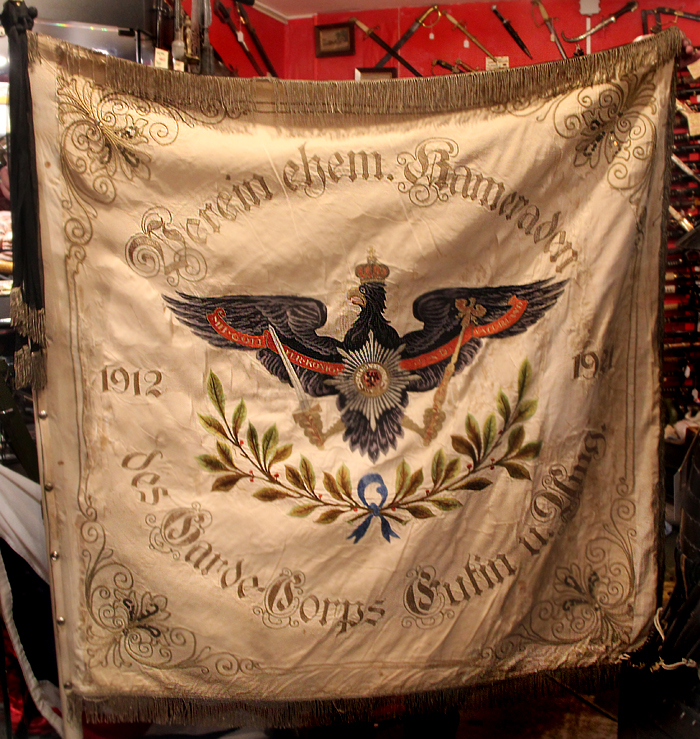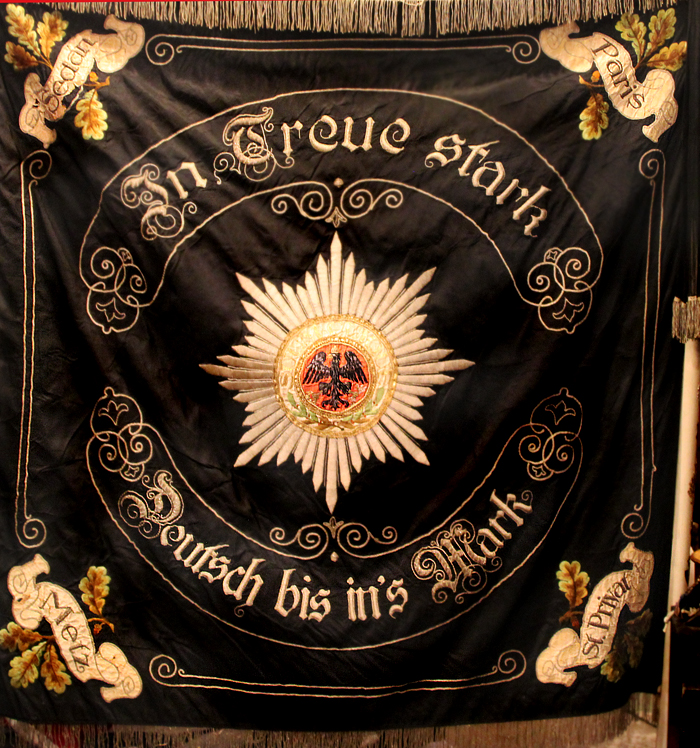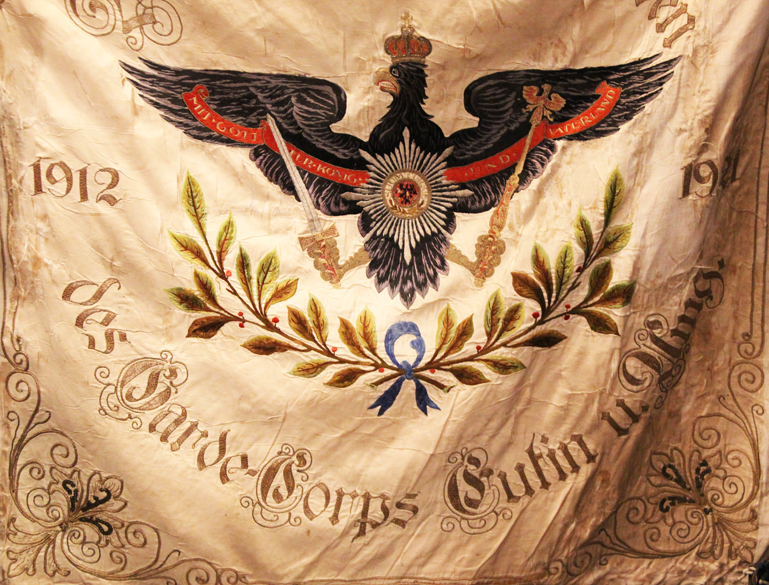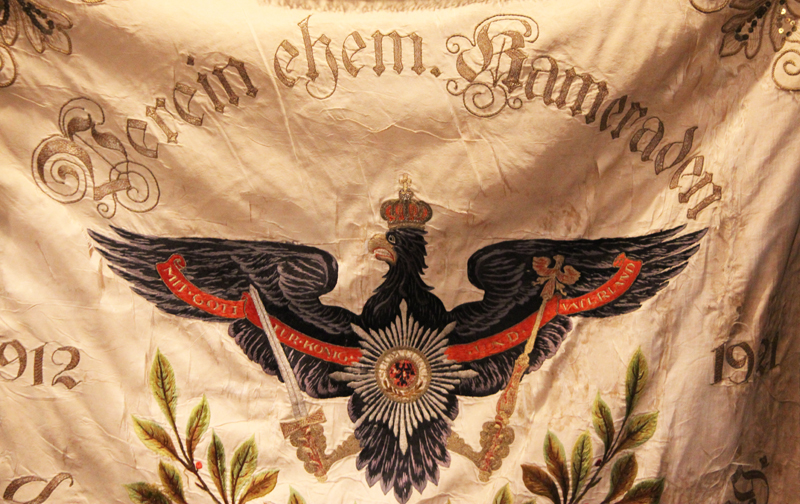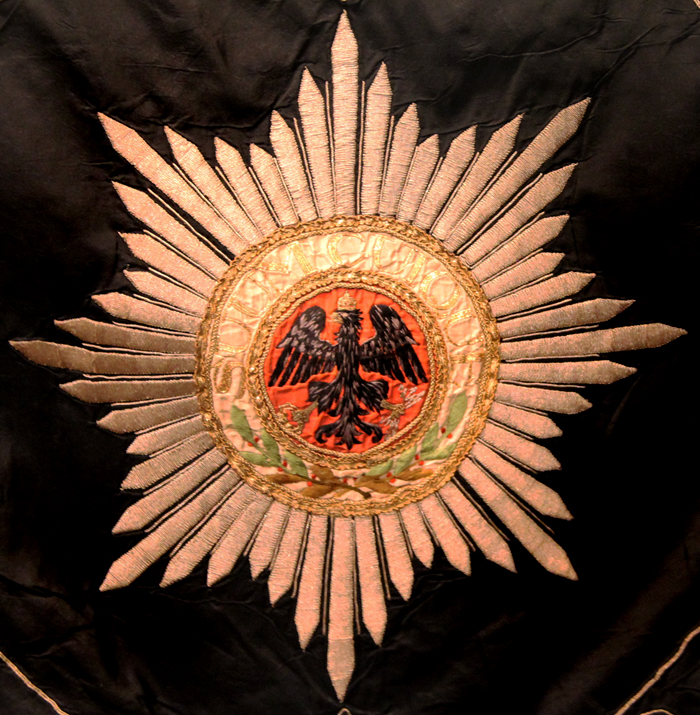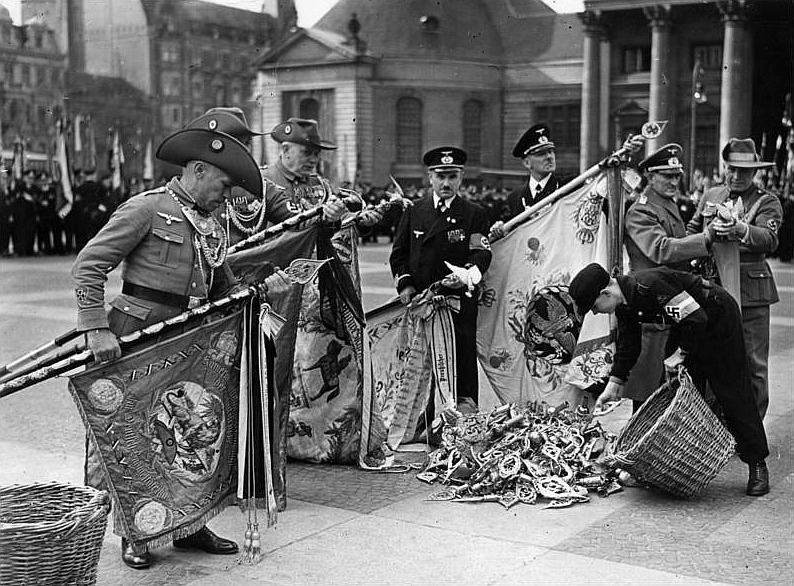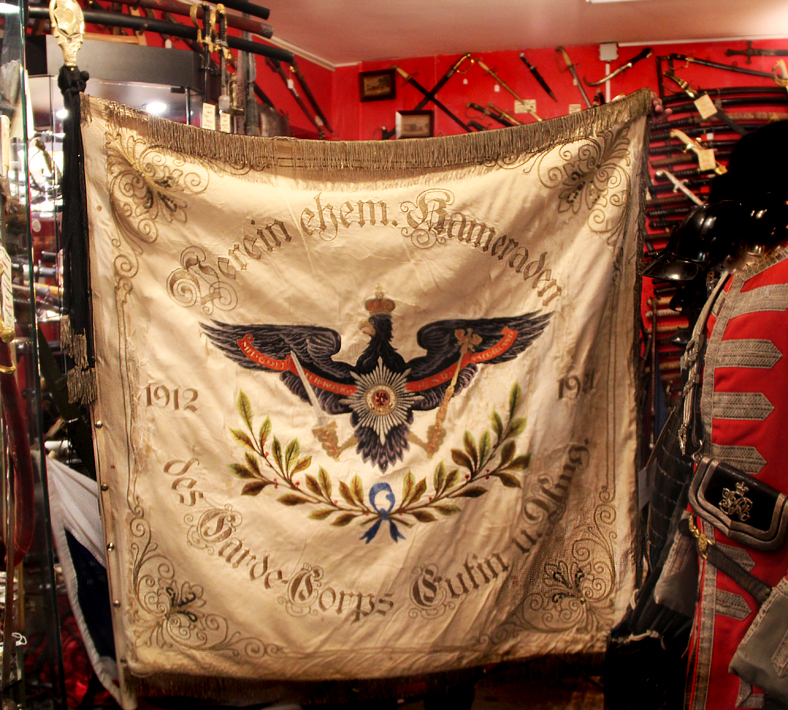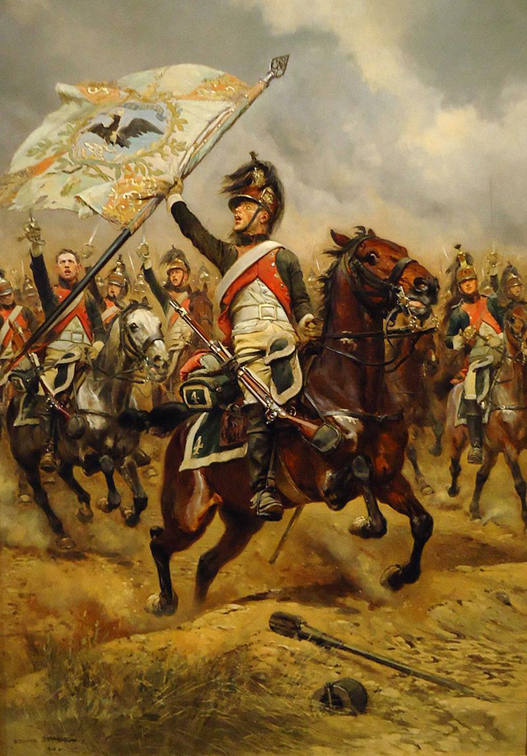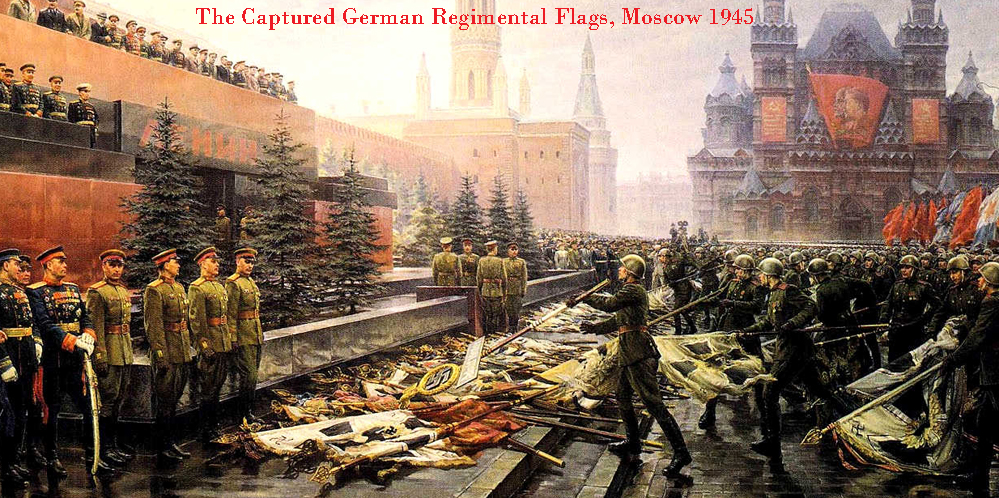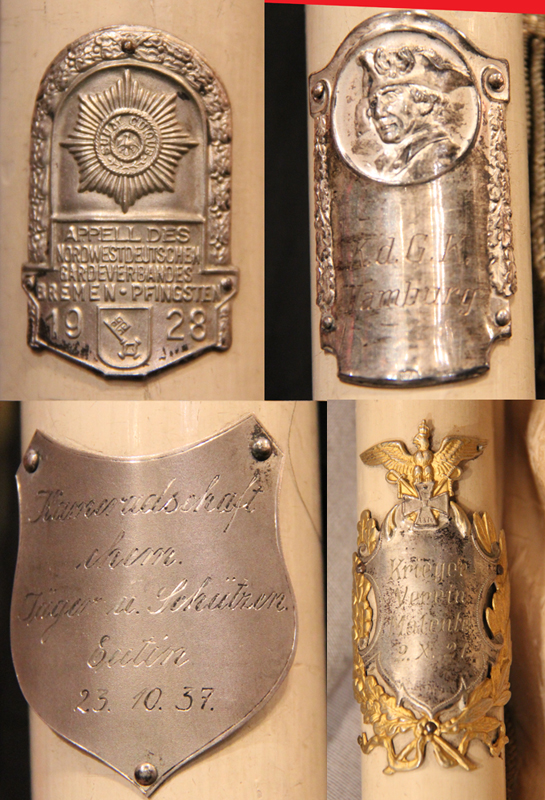SOLD. A Fabulous, Extremely Rare, Original, Silk Regimental Standard of the Imperial German Kaiser's Bodyguard, His Garde Du Corps, in Silk, Twin Sided
Just returned from being loaned by us and used in a documentary on German regimental flag ‘standards’ and those lost in the retreat from Operation Barbarossa, and captured by the Red Army.
An absolutely beautiful silk, regimental veteran’s 'double' flag regimental standard, with its original flag standard marching double pole {they join together and its original crested banner top} of the Imperial German 'Garde Du Corps', and with the high Order of the Black Adler Eagle. Recovered and rescued at the end of WW2 by an allied officer and brought to England.
Approx. 4 feet x 4 feet.
Although a WW1 regimental standard many, including this one, were used inter war during the Weimar period, and continually into WW2. Many of those that served their Kaiser in WW1 served their Fuhrer just 15 years after the close of the Great War. The attendance rally badges attached to this standard’s pole show this was certainly the case with this flag, some from 1928 onwards others up to a Third Reich rally in 1937
It is a near miracle that this magnificent standard survived past 1945 as probably 99% of all similar regimental standards were destroyed or looted and sent back to Moscow by Stalin’s invading Red Army, before and after the fall of Berlin.
The Gardes du Corps (Regiment der Gardes du Corps) was the personal bodyguard of the king of Prussia, and, after 1871, of the German emperor known as the Kaiser. The unit was founded in 1740 by Frederick the Great. Its first commander was Friedrich von Blumenthal, who died unexpectedly in 1745; his brother Hans von Blumenthal, who, with the other officers of the regiment had won the Pour le Merite in its first action at the battle of Hohenfriedberg, assumed command in 1747. Hans von Blumenthal was badly wounded leading the regiment in a successful cavalry charge in the battle of Lobositz and had to retire from the military.
Initially, the Regiment was used in part as a training unit for officers as part of a programme of expansion of the cavalry. Early officers included the rake and memoirist Friedrich von der Trenck, who described the arduous life of sleep deprivation and physical stress endured by officers, as well as the huge cost of belonging to the unit (the cuirasses, for example, were silver-plated at a time when the precious metal was exceptionally expensive).
Unlike the rest of the Imperial German Army after German unification in 1871, the Garde du Corps was recruited nationally and was part of the 1st Guards Cavalry Division. The Regiment wore a white cuirassier uniform with certain special distinctions in full dress. These included a red tunic for officers in court dress and a white metal eagle poised as if about to rise from the bronze helmet on which it sat. Other unique features of the regiment's full dress worn until 1914 included a red sleeveless Supraweste (vest) with the star of the Order of the Black Eagle on front and back and the retention of black iron cuirasses edged with red which had been presented by the Russian Tsar in 1814. These last replaced the normal white metal breastplates on certain special occasions. The haft is a twin section piece combining to around 12 foot high, the pole has numerous silver plaques representing all of the German military rallies the Gardes du Corps veterans attended, carrying this standard before them, in the 1920's and 30's before WW2. At the end of the war most of the German standards, both SS, Heer, Luftwaffe and Veterans Imperial standards complete, like this one, with their marching poles and banner tops had been captured by the Russians and ceremonially displayed in Red Square. This standard is one of the few Garde Du Corps standards that escaped and managed to avoid that ignominious end. Marshals Georgy Zhukov, who had formally accepted the German surrender to the Soviet Union, and Konstantin Rokossovsky, rode through the 1945 Moscow parade ground on white and black stallions, respectively. The fact is commemorated by the equestrian statue of Zhukov in front of the State Historical Museum, on Manege Square. Zhukov's stallion was called "Idol". The General Secretary of the Communist Party of the Soviet Union, Joseph Stalin, stood atop Lenin's Mausoleum and watched the parade alongside other dignitaries present. One of the most famous moments at the end of the troops parade took place when various NKVD soldiers carried the banners of Nazi Germany and threw them down next to the mausoleum. One of the standards that was tossed down belonged to the LSSAH, Hitler's personal bodyguard. One of the paintings in the gallery show a very similar Gardes Du Corps regimental standard captured by French Cuirassiers at the Battle of Jena. The Germanic Gothic reads In Faithful Power To The Bones, and the district of Guttin Ulm. The condition overall is excellent for age, but with some usual fine line silk splitting here and there as usual and certainly as to be expected..
Code: 22190

